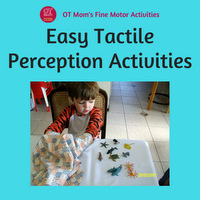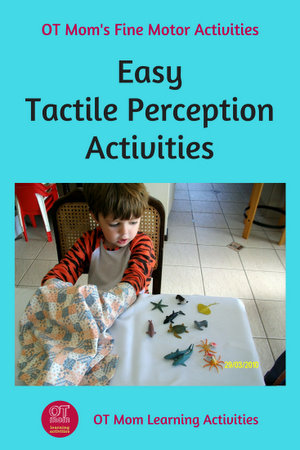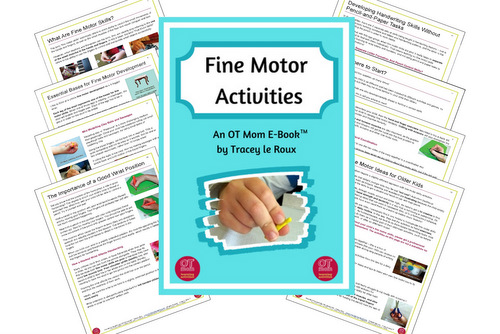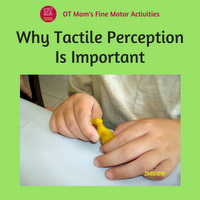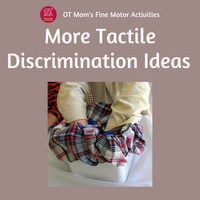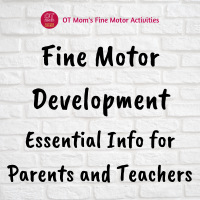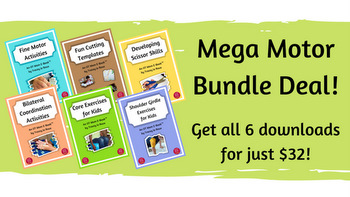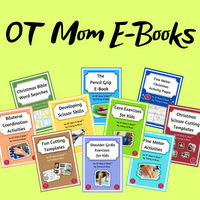- Home
- Fine Motor Activities
- Tactile Perception
- Tactile Perception Activities
Tactile Perception Activities
Tactile perception activities can help a child develop good touch perception. This, in turn, can aid in the development of good fine motor skills.
The activities on this page are roughly graded from easy to more difficult, so start at the level you think will be the most satisfying and fun for your child and then make it easier or more challenging as needed.
These activities will help your child learn to process touch feedback from the hands in order to use the hand and fingers more effectively.
Most of the tactile perception activities need a bag to hide the objects in – simple instructions for the bag are given below, along with quick links to the different activities on this page.
For your convenience, I have linked to products on Amazon (marked #Ad) that are similar to the ones I use myself - I may receive a small commission if you purchase something through these links, which helps support this site. However, you are under no obligation to purchase anything!
Make A Simple Feely Bag
Most of the tactile perception activities below make use of a “feely bag” – basically a bag that is large enough for your child to put both hands inside to feel the objects.
Cloth bags are best, as plastic bags create too much distracting noise! You can even use an old handbag.
I like to create two holes for the hands to go through – You can do this easily by using a safety pin to hold the bag in the middle – or simply sew it closed in the middle.
 Pin an cloth bag in the center to create two "holes"
Pin an cloth bag in the center to create two "holes"Household Object Tactile Game
Place various familiar household objects in the bag, and ask your child to feel one and tell you what it is without looking.
Your child can then pull the object out and see if they were right!
Tip:
Make sure your child knows the names of all the objects.
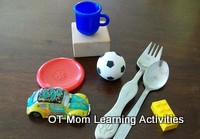 Simple household objects to put inside the feely bag
Simple household objects to put inside the feely bagIf language skills are an issue, then have a matching set of items outside the bag that your child can point to.
Make it harder: Ask your child to find a specific object
Add interest: Use objects related to a theme, such as kitchen objects, bathroom objects, toys etc.
Grocery Tactile Activity
Use packaged grocery items such as dried beans, rice, popcorn, macaroni, pasta shells, jelly sweets, raisins.
First make sure your child knows the names of all the groceries, and have your child feel the packets to get a sense of how they differ.
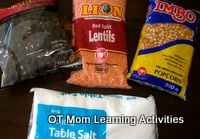 packaged grocery items for your child to identify by feel
packaged grocery items for your child to identify by feelPop the items inside your feely bag. Ask your child to put both hands into the bag, feel a packet and to tell you which item it is. After “guessing”, let your child pull it out to see if it's correct.
Make it harder: Ask your child to find a specific grocery item. The more items are in the bag, the harder this activity will be.
Tactile Discrimination: Shape Activity
Before beginning:
Let your child feel each shape as you describe it (or let your child describe it).
For example: a circle is round and has no corners; a square has 4 corners and 4 sides all the same, but the diamond has 2 narrow/sharp corners and 2 wider corners etc.
Put one set of the shapes in the bag, and place the other set on the table for your child to look at, to help with identification.
Your child should use both hands to manipulate the shape and then tell you what shape it is.
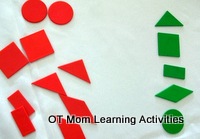 use 2 sets of shapes
use 2 sets of shapesMake it harder: Ask your child to find a specific shape, or increase the number of shapes in the bag.
Add interest by finding specific shapes needed to build a picture.
Use resources such as Pattern Blocks#Ad to combine finding the shapes with building the picture
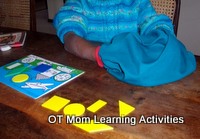 feeling for the correct shape
feeling for the correct shapeTactile Discrimination: Animal Activity
 Two identical sets of small animals
Two identical sets of small animals Buy two sets so you have two of each
Buy two sets so you have two of eachFor these tactile perception activities, you will need two identical sets of small animals (eg dinosaurs, zoo animals, sea creatures - you can get these cheaply on Amazon#Ad)
Before beginning:Look at the animals with your child and talk about the difference in the animals: some have 4 legs all the same size, some have 2 big back legs, and 2 smaller “arms”. Feel the different arrangement of spikes, horns, ears etc.
Put one set of the animals in the bag, and place the other set on the table for the child to look at. Your child should use both hands to feel the animals.
Encourage your child to look at the set on the table to help with identification.
 Feeling for the matching animal
Feeling for the matching animalMake it easier: Use fewer animals, or use animals that are not very similar (eg lion, elephant, giraffe)
Make it harder: Ask your child to find a specific animal, or use animals that are very similar, so your child has to pay attention to small details such as the length of the tails and snouts, the position of the ears, etc.
Resources for Tactile Perception Activities
The resources below are similar to the ones I use above, located on Amazon for your convenience. These are affiliate links, which means I may earn a small commission if you purchase something through my links. However, you are under no obligation to purchase anything!
- Pattern Blocks for matching shapes#Ad
- Textured beanbags (match the texture)#Ad
- A lovely toddler touch and feel toy#Ad
- Small plastic toy animals#Ad - buy 2 sets to have your child have one out of the bag to look at, and one inside the bag to find
I hope you found this page of tactile perception activities to be helpful and inspiring. It really is easy to try and help your child develop this important skill.
For more fine motor activities please check out my fine motor printable e-book - you will get a wealth of activities for the price of a couple of coffees!
- Home
- Fine Motor Activities
- Tactile Perception
- Tactile Perception Activities
If this page was helpful, please share it with your friends!
All Of My Fine Motor Activities In One Place!
Do you want practical activities to help develop your child's fine motor skills with everyday resources?
Are you tired of lists of suggestions that don't show you HOW to do the activities?
My Fine Motor Activities E-Book contains lots of helpful information as well as more than 24 pages of photographed activities to help support your child's fine motor skills!
There are multiple activities on each page, making this a treasure trove for parents, teachers and therapists!
Related Pages And Extra Info
Didn't find what you were looking for? Try a search of my site!
